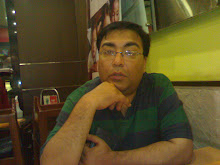Yesterday I came across a piece in The Hindustan Times, which talked about the 'luxury' that a hospital now offers. The piece had snaps of fancy chefs offering a choice of cuisine to patients, nurses 'requesting' young patients, mostly kids to have their medication and the smiling front office staff making 'guests' welcome.
This made me remember my grandmother, who is all of 104 years old narrating to me her escapades in hospitals run by the British in colonial India. She had great admiration for the no nonsense English doctors, the stern nurses, who followed orders and paid little attention to patient grievances. She remembers these episodes with a mixture of nostalgia and respect for the efficiency that this system stood for. The food was always what the doctor ordered, the medicines were given like clockwork and chores like sponging were a must-the patient had little choice in the matter.
In today's age of the service economy, the patient has become a guest (air passengers too have become guests) to be treated and pampered. Hospitals try their best to provide a luxurious stay, with patients allowed to exercise choice in almost everything except perhaps medical treatment.
While this is great for patients and their attendants, to compare a hospital with a hotel is futile. No one except crooks wishing to evade imminent arrest go to a hospital of their own volition. Illnesses, which drive people to hospitals are universally considered a period of misfortune. Howsoever luxurious the hospital might be, one still wishes to recover and step out of it as soon as possible. The fact is that I am yet to meet anyone, who really wishes to spend a few nights in the luxury of a 5 star hospital!
The unfortunate part is that a story, which highlights these peripheral services in a hospital tends to trivialise the core services of the hospital, which essentially revolve around medical care. Somehow the patients feel that these hospitals have little substance and a lot of style, which amounts to very little. This perception though (in many cases) unjustified is usually strong and hard to shake off.
The hospitals featured in this story included Indraprastha Apollo Hospitals and Max Hospitals amongst others. As the head of marketing communications of any of these hospitals, I would be very wary of a story like this.
I have nothing against hospitals treating patients as guests. However, they must remember that talking too much about these is never a good idea. It would be a lot better for customers to spread the word around, about the great experience they had in the hospital.
It would really serve the hospital a lot better.
